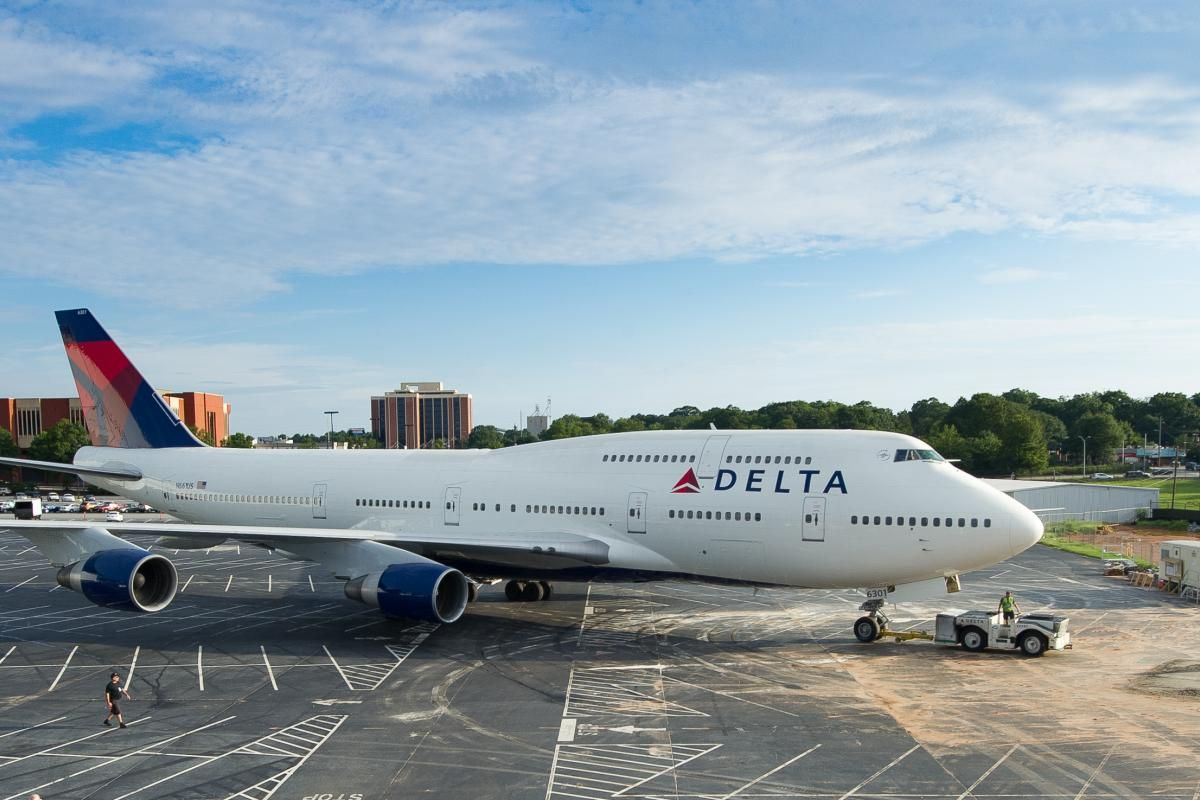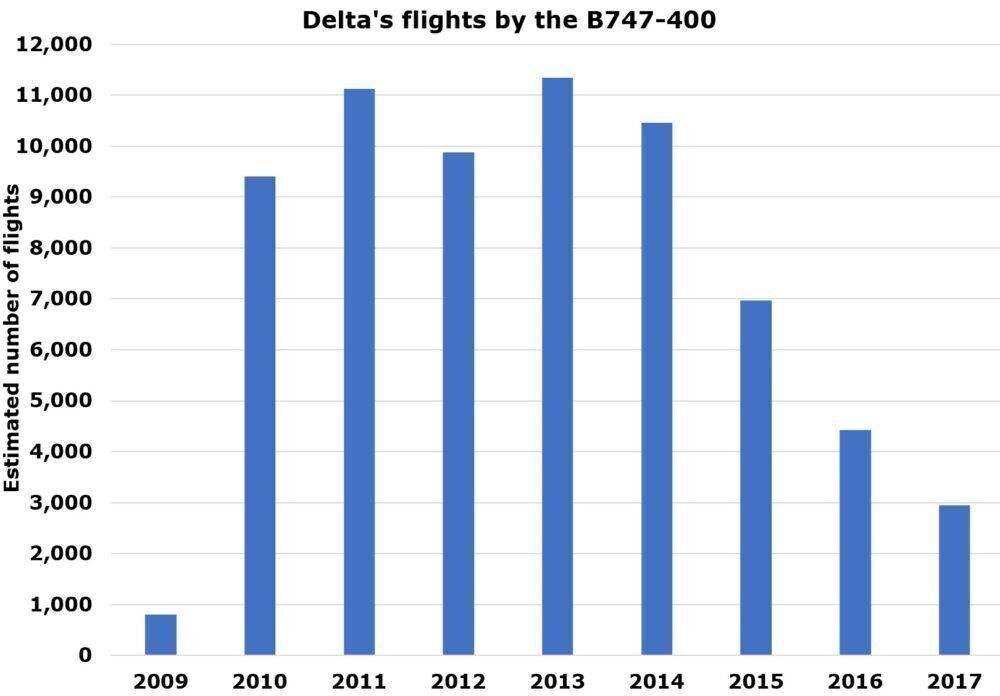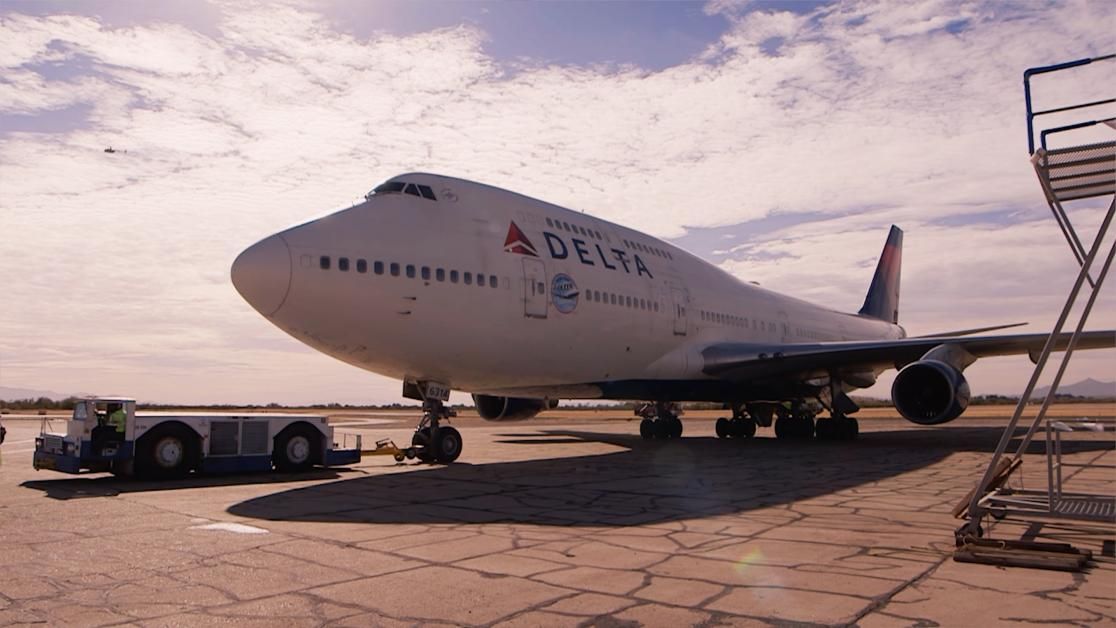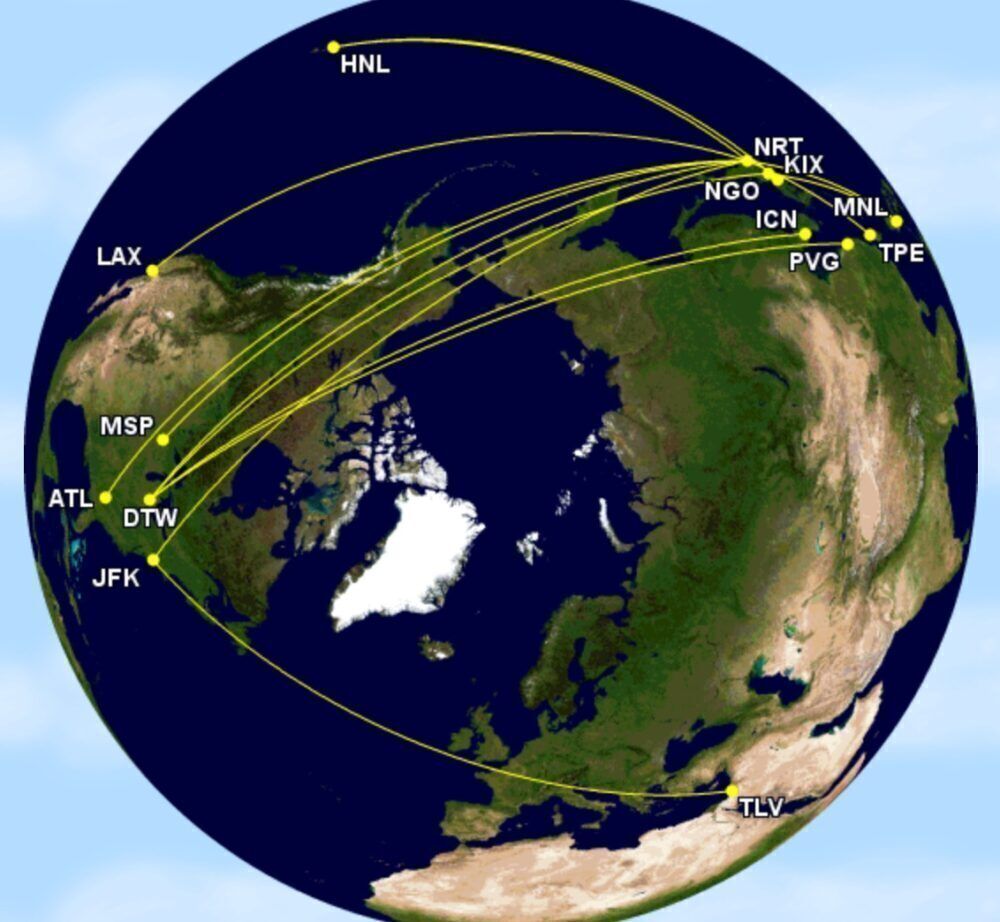After flying from Seoul to Detroit, Delta Air Lines retired the last of its Boeing 747s from scheduled revenue service on December 19th, 2017. Despite the 744 being used between 2009 and 2017, you might be surprised to learn that Delta Connection’s Dornier 328JETs had more flights in one year than the 744 did in total. We take a look at Delta's 747-400 operations.
Boeing 747-400 N666US had the honor of operating Delta's final scheduled service by the type. The aircraft was the ninth-oldest of all 747-400s, ch-aviation.com shows, and it first flew on July 31st, 1989.
It was delivered to Northwest Airlines on August 18th, 1989, and it remained in service with the carrier until it and Delta combined. According to Boeing, N666US flew 115,105 hours in its lifetime and had 13,894 cycles (take-offs/landings).
The 744 operated between 2009 and 2017
Delta operated 16 747-400s in all, obviously all inherited from Northwest. Delta obtained large numbers of aircraft from the merger, notably A330-200/300 and DC-9-30/40/50 units, but it was the 744 that was the most iconic.
From April 2009, six months after the merger was approved, the 744 began to be operated by Northwest for Delta. There were two routes that year: from Atlanta to Honolulu (then the USA's third-longest domestic service) and Atlanta to Tokyo Narita. In 2021, Atlanta to Tokyo (now Haneda) is operated by the A350-900, such is the global move towards lighter, smaller twins with lower fuel consumption and maintenance.
Fewer Delta flights than the Dornier 328JET
Between 2009 and 2017, Delta had about 67,000 flights performed by the 744, including non-stops and one-stops. To put that into context, in the last year that Delta Connection used the extremely rare 328JET (2004), that regional type had more flights than the 744 if all years are combined. Of course, it's a very different story if seats or available seat miles are considered.
The peak year for 744 use came in 2013, Cirium data shows, with over 11,300 flights and 4.3 million seats. That year, the type was used on 18 non-stop routes, including one-offs like Detroit-Los Angeles and Atlanta-Seattle.
Stay informed: Sign up for our daily and weekly aviation news digests.
Almost all about Asia
In all, Delta's 744s operated some 40 non-stop routes, including a number of one-offs and those with a small series of services. Only 14 routes were served with 2,000+ flights, as illustrated in the following map, with Tokyo Narita featuring eight times.
Indeed, Honolulu to Narita was Delta's most-served 747-400 route, followed by Narita-Manila and Narita-Detroit. The type was all about Asia – at it was with Northwest. Because of Delta's mini-hub at Narita, the airport was by far the number-one to see the 744.
Tel Aviv, Amsterdam, and Paris
New York JFK to Tel Aviv was the fifth-thickest route served by the 744. Delta launched the route in 2008 with the 767-300ER, before it was joined the following year by the 777-200ER and -200LR. The 744 took over between 2010 and 2014. The 777 returned, which was later replaced by the A330-300. In June 2021, JFK-Tel Aviv is operated by the A330-900.
Delta's 747-400s did visit the European mainland, just not for long or to a large degree. The SkyTeam hubs of Amsterdam and Paris CDG were both served. The year 2015 had the most flights, with Detroit-CDG operating, along with Amsterdam from Atlanta and Detroit and one-offs from Minneapolis and Seattle.
A reluctant operator
Notably, Delta operated the 747 series during two different eras. It operated the jumbo way back in 1970, the same year that the type was introduced. The original variant to join was the -100, and there was plenty of excitement for the widebody. However, unlike its counterparts, Delta wasn't such a fan of the 747 as the company felt the plane was too large for its routes. As a result, the aircraft was phased out between 1974 and 1977. Around three decades later, the family made its way back to the airlines as a consequence of a more significant deal. At least the 747 had a longer run in the fleet the second time around.
The 747-400 is increasingly becoming a rarity across commercial passenger operations. There are just a handful of prominent commercial operators of the plane, including Rossiya, Lufthansa, Atlas Air China, Max Air, Iraqi Airways, and Mahan Air. Nonetheless, the aircraft will always be remembered as a legend across the industry.
What are your thoughts about Delta's operations with the Boeing 747-400? Did you ever fly with the airline on the model? Let us know what you think of the carrier nd the aircraft in the comment section.




